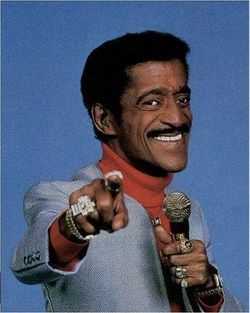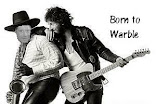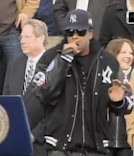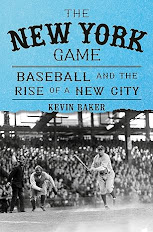You ain't fooling me. Three straight wins against the all-time losingest team in the history of sports (11,302 and counting)? Fuhgeddaboutit. Back to the wake.
The Dodgers’ and Giants’ pleas of poverty back in 1957 might have made some headway in New York—save for a single, feisty public servant.
Crusty old Emanuel Celler was nearly 70, and a little over halfway through a remarkable congressional career that last 50 years. He fought for one great cause after another in that time, proved instrumental in passing some of the most important legislation in our history, and stood up to figures ranging from FDR to Joe McCarthy.
He was not about to back down to Walter O’Malley.
Instead, Celler somehow got hold of all of baseball’s revenue sheets and expenses from 1947-56 (With the mysterious exception of 1951—surely a banner year for baseball in general, and New York in particular. MLB may have simply burned the accounts books for that year, they were so good).
It turned out that all three New York baseball clubs, even the stumbling Giants, had made money during this period. Most of all, it put the lie to Walter O’Malley’s contention that the Dodgers would be unable to compete without a new ballpark.
The Yankees, unsurprisingly, had made the highest profits in baseball during the postwar years. But right behind them were the Brooklyn Dodgers. Between 1946 and 1949, the Dodgers had averaged over half-a-million dollars a year in profit. From 1952-56, that average dropped to $372,149, but it was still the highest profit margin in the major leagues.
How was this possible, particularly with the Miracle Braves of Milwaukee outdrawing the Dodgers by over 800,000 fans?
The answer, of course, was broadcasting.
The Dodgers, located in the largest media market in the country, had already put together a national radio network so wide that they were considered “America’s team.” With TV, they made a major-league best, $888,270 for all broadcasting rights in 1956—or over $350,000 more than their entire payroll, before a dime from gate receipts or parking, or peanut concessions was counted.
(The Dodgers’ black ink may have been even thicker. Roger Kahn wheedled a Dodgers’ balance sheet for 1953 that he claimed showed club profits at over $2 million that year alone—or more than 50 percent of expenditures.)
Thanks to television, New York’s teams now enjoyed an advantage unlike any they had ever known over the competition—and it was one that would only grow over the next half-century.
Before TV and radio, it really only mattered how many people you could cram into your ballpark. A well-run, small-market team could easily compete with the biggest cities in the league—as Branch Rickey had proved year after year out in St. Louis.
With television and radio, it was a whole new ballgame—with New York’s advantage increasing exponentially.
Minneapolis, where Horace Stoneham first wanted to move, was just the 14th largest metropolitan area in the country—one-tenth the size of New York. San Francisco, where he ended up, was only one-fifth the size. Even Los Angeles, where Walter O’Malley wheedled enormous concessions for himself and his team out of the city council, was a distant second in population to New York—as it remains today.
The Brooklyn Dodgers were never going to be the Washington Senators—and nobody in New York was going to build them a new stadium for free. The Braves, meanwhile, lasted all of 13 seasons in Milwaukee, before moving on to Atlanta.



















































7 comments:
Bless you, Hoss. You speak truth to - well, if not power, to us, at least, and we love you for it.
Thanks, Bitty!
SIMPLE. GREEDY AND CHEAP OWNERS AND INCOMPETENT BOOB GMS.
This is a great series. I'm waiting for the next post with baited breath. Really. Great story.
Thanks, JM!
Great posts! I've never seen this side of baseball. Horace you give great history lessons, and I thank you!
A great series, Hoss. Thank you for the history lesson. So instructive. And sad. Because nothing has changed with these miscreants.
It makes me incredibly enthusiastic about applying imminent domain to the assets of the powerful. Starting with Yankee Stadium. After all, we paid for the place.
Post a Comment